
Like their near relatives, tomatoes and potatoes, eggplants are available in a wide range of colors and sizes. Some are tiny and green, others are white and egg-shaped -- hence the name -- while others are zucchini-shaped and come in various shades of purple. The most familiar to Americans is the large, oval purple-black variety from Europe. They're very perishable, and often even the freshest eggplants will quickly develop soft spots. Whether you can still cook them is a judgment call.
Selecting Eggplants
It helps to buy the freshest, most perfect eggplants you can find. The smaller, zucchinilike Asian varieties are less prone to bruising than the large varieties, so rough handling by other customers won't affect them as much. With those or the larger European variety, the eggplants should have a smooth, glossy skin with no wrinkling. Wrinkling or a brown color are signs of age, and age makes eggplants bitter. The eggplant should feel quite firm when squeezed gently. If you detect soft spots, the eggplant has been bruised and will quickly brown and rot over the coming days. Put it back and choose another.
Bruising
Bruising is the most common flaw in eggplants, because they're so delicate. It shows up as dimpled areas in the skin, within a day of your purchase or sometimes within hours. Bruising damages the cell walls inside the eggplant, allowing its juices to carry oxygen and browning enzymes into the damaged area. As with an apple, this creates a soft, mushy area with a brown color and unpleasant taste. Most of the eggplant remains usable. Use the tip of your knife to cut out the bruised area, taking care to remove all of the browned flesh. Use the eggplant immediately, once you've cut into it; otherwise, it will continue browning.
Internal Rot
True rot is rare in store-bought eggplants. It's caused by physical damage to the skin, which allows air, yeasts, mold and bacteria to enter. If you grow your own eggplants, some forms of rot can occur at either the blossom or stem end. To decide whether the eggplant is usable, cut it open. If there's any visible mold inside the flesh, the whole eggplant should be discarded. Mold permeates porous foods before it becomes visible, and can be toxic. If the rotted area is small and distinct, and the remaining flesh is firm and pale, feel free to cut away the affected section and cook the rest.
Cooking Imperfect Eggplants
Usually you can salvage most of a damaged eggplant, if you choose to. Cutting away the bruised or rotted areas spoils the vegetable's appearance, but there are still several ways to use it. It can be sliced and grilled, or breaded for eggplant Parmesan. Partial eggplants can be cut up for ratatouille and other mixed dishes, and eggplants that are mostly intact can be roasted and used for baba ghanouj or other dips. If your eggplant's flesh has darkened and its seeds are brown, it's overmature and probably bitter. Scoop out the seeds with a spoon and slice the remaining eggplant. Sprinkle the slices with salt and let them drain in a colander for an hour or more to extract the bitter juices, then rinse and cook them.
Related Articles

Brining Eggplants

What Happens to Bananas Dipped in Lemon ...

How to Prepare Hansel Eggplant
How to Clean a Kiwi so the Skin Is Safe ...

How to Store Shallots
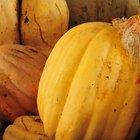
How to Store & Keep Zucchini and Squash ...
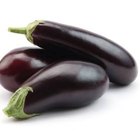
How to Clean Eggplant
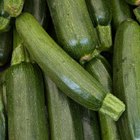
How to Clean Zucchini
How to Grill Chayote Squash

How to Tell When Okra Is Ripe
Can You Eat Ginger Peel?

How to Tell When Baking Potatoes Are Bad

How to Eat a Quince
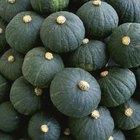
Can I Eat the Peel on Kombucha Squash?

Can You Peel and Refrigerate Bananas ...
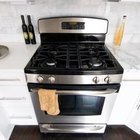
How to Oven-Dry a Bitter Gourd

Are Bananas Safe to Eat if the Skin Is ...

What Is the Easiest Way to Peel ...
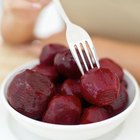
How to Boil Beetroot

How to Keep Chives Fresh
References
- On Food and Cooking: The Science and Lore of the Kitchen; Harold McGee
- On Cooking: A Textbook of Culinary Fundamentals; Sarah Labensky, et al.
Resources
Writer Bio
Fred Decker is a trained chef and prolific freelance writer. In previous careers, he sold insurance and mutual funds, and was a longtime retailer. He was educated at Memorial University of Newfoundland and the Northern Alberta Institute of Technology. His articles have appeared on numerous home and garden sites including GoneOutdoors, TheNest and eHow.
Photo Credits
Eising/Photodisc/Getty Images